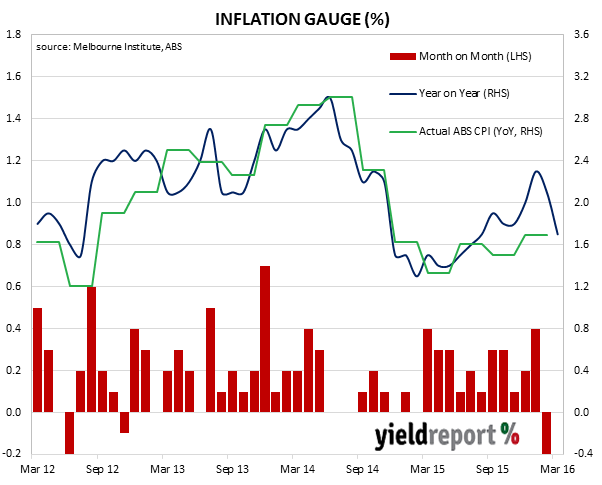Consumer prices were largely unchanged in March as the prices of fruit, vegetables and electrical equipment and computers offset price rises tobacco, travel and accommodation. According to the latest reading of the Melbourne Institute Monthly Inflation Gauge, inflation over the 12 months to March fell from 2.3% to 1.7%.
The Monthly Inflation Gauge has been a good forecaster of headline inflation numbers (see below chart) which are an important component in determining interest rate policy.

One of the underlying reasons for low headline inflation rates around the world has been falling oil prices. West-Texas Intermediate (WTI) was at USD$100 per barrel in April 2014. By April 2015 it had halved in price and in and in February this year it reached a low of USD$28. However, WTI has risen recently USD$38 per barrel and so headline inflation measures which include consumer fuel prices are likely to see fuel prices add to inflation in the future. “Core” measures of inflation do not include fuel and so have consistently been higher than headline figures in the last two years.
The Melbourne Institute’s Dr Sam Tsiaplias said, “After two months of substantive falls in the price of automotive fuel, this month saw a small increase in the fuel price. If we exclude volatile items, quarterly inflation rises to about 0.8 per cent which indicates the significant impact that oil prices have had on inflation in the last few months.”

